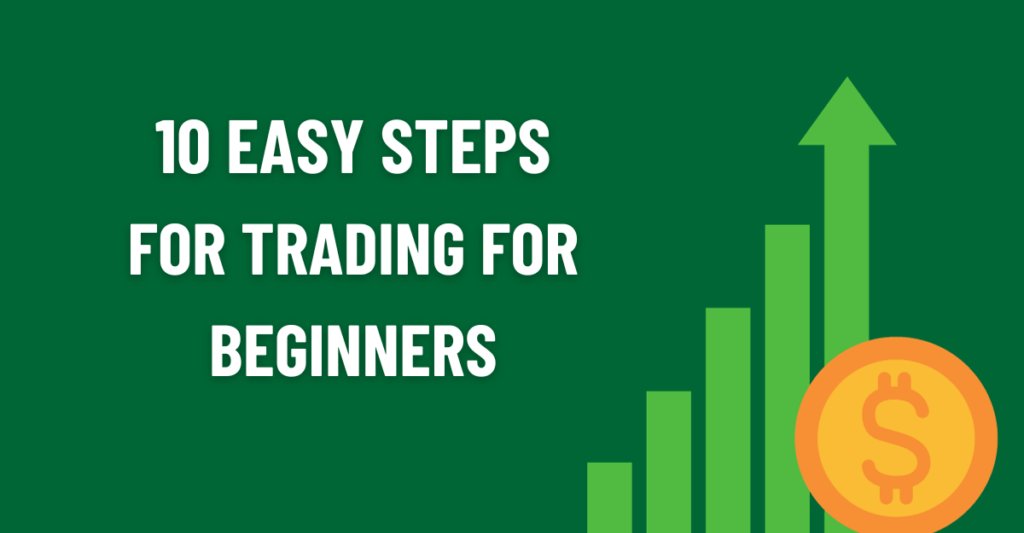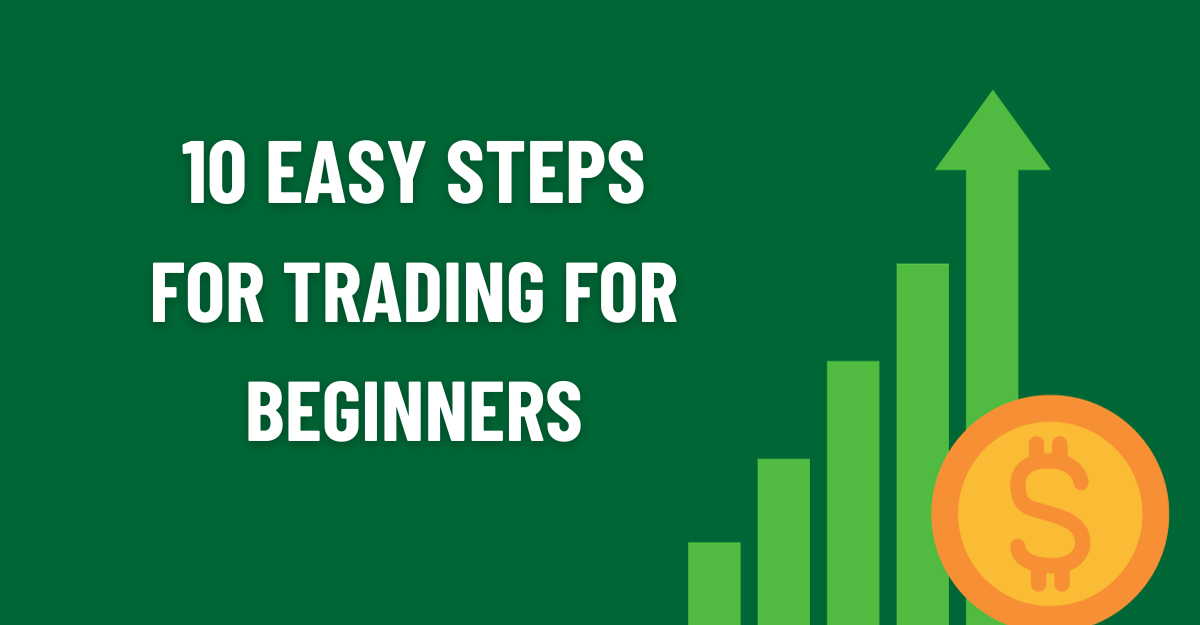
Introduction
Embarking on the journey of trading for beginners can be both exciting and challenging. Whether you’re intrigued by the stock market, forex, or cryptocurrencies, this guide will provide you with a step-by-step Trading for Beginners
Step 1: Educate Yourself for Trading for Beginners
Before diving into the world of trading, it’s crucial to understand the basics. Familiarize yourself with terms like stocks, bonds, forex, and cryptocurrency. Numerous online resources, courses, and books are available to provide foundational knowledge.
Step 2: Choose the Right Trading Platform
Selecting the right trading platform is akin to choosing a reliable vehicle for a journey. Look for platforms that offer user-friendly interfaces, real-time market data, and essential analytical tools. Consider factors like fees, security, and customer support.
Step 3: Practice with Demo Accounts
Most trading platforms offer demo accounts for beginners to practice without risking real money. Utilize this opportunity to familiarize yourself with the platform, understand market dynamics, and refine your strategies.
Here, we’ve compiled a list of 10 best demo accounts across various trading platforms.
1. MetaTrader 4 (MT4) Demo Account
MetaTrader 4 is a widely used platform known for its user-friendly interface and powerful analytical tools. Many brokers offer a free MT4 demo account, providing access to real-time market data and a simulated trading environment.
eToro, a renowned social trading platform, offers a virtual portfolio for users to practice trading without financial risk. The platform provides a unique social aspect, allowing users to observe and mimic the strategies of successful traders.
3. Thinkorswim PaperMoney by TD Ameritrade
Thinkorswim, a platform by TD Ameritrade, provides a feature called PaperMoney that allows users to simulate trading in real market conditions. It’s an excellent tool for those interested in stocks, options, and futures.
IG is a well-established brokerage offering a comprehensive trading demo. It provides access to a wide range of financial instruments, including forex, stocks, and commodities, allowing users to practice with a virtual balance.
Plus500 is known for its intuitive platform, and it offers a demo account for users to familiarize themselves with the platform’s features. It’s a great option for beginners interested in trading CFDs on various assets.
6. NinjaTrader Simulation Account
NinjaTrader is a popular platform for futures and forex trading. It provides a simulation account that allows users to practice trading strategies in a risk-free environment before transitioning to live trading.
AvaTrade is a well-regulated broker offering a user-friendly platform. The demo account provides access to a variety of assets, making it suitable for beginners exploring different markets.
SaxoTraderGO, by Saxo Bank, offers a feature-rich demo account. It allows users to explore various trading instruments and access educational resources to enhance their trading knowledge.
ForexTime (FXTM) provides a comprehensive demo account for forex trading. It’s an excellent option for beginners interested in the foreign exchange market, offering a risk-free environment to practice strategies.
OANDA is a well-regarded forex broker that provides a robust practice account. It allows users to test their strategies in real market conditions, and the platform is known for its accurate pricing and execution.
Conclusion
Choosing the right demo account is a crucial step in your journey as a trader. Each of the mentioned platforms offers a unique set of features and advantages. Experiment with a few to find the one that aligns with your preferences and trading goals.
Step 4: Start Small
As a beginner, it’s advisable to start with a modest investment. Avoid the temptation to go all-in initially. This approach allows you to learn and adapt without exposing yourself to significant risks.
Step 5: Understand Different Types of Trading
Explore various trading strategies, including:
- Day Trading: Short-term trades within a single day.
- Swing Trading: Holding positions for a few days to weeks.
- Long-Term Investing: Patiently holding assets for an extended period.
Step 6: Set Clear Goals
Define your trading goals. Whether it’s generating additional income, building long-term wealth, or simply learning the art of trading, having clear objectives will guide your decision-making process.
Step 7: Develop a Trading Plan
Crafting a trading plan is essential for success. Outline your risk tolerance, preferred trading hours, and strategies. A well-defined plan acts as your roadmap in the volatile world of financial markets.
Here are the key steps to develop a trading plan:
- Define Your Trading Goals:
- Establish clear and realistic goals. Determine whether you are trading for income, capital growth, or a combination of both. Define your financial targets and timeframes.
- Risk Tolerance and Capital Allocation:
- Assess your risk tolerance and allocate capital accordingly. Determine the percentage of your trading capital you are willing to risk on each trade. Avoid risking more than you can afford to lose.
- Choose a Trading Style:
- Identify your preferred trading style, whether it’s day trading, swing trading, or long-term investing. Your trading style should align with your personality, lifestyle, and available time for monitoring the markets.
- Select Markets and Instruments:
- Choose the financial instruments and markets you will trade. This could include stocks, forex, commodities, or cryptocurrencies. Ensure you have a good understanding of the chosen markets.
- Develop Entry and Exit Strategies:
- Define clear entry and exit criteria for your trades. Specify the conditions that will trigger a trade, as well as the conditions for taking profits or cutting losses. Use technical and/or fundamental analysis to inform your decisions.
- Risk Management Rules:
- Establish risk management rules, including stop-loss orders and position sizing. Determine the maximum percentage of your capital you are willing to risk on a single trade. This helps protect your account from significant losses.
- Set Realistic Expectations:
- Have realistic expectations about potential returns and market conditions. Understand that trading involves both winning and losing trades, and losses are a part of the process.
- Keep a Trading Journal:
- Maintain a detailed trading journal to track your trades, including entry and exit points, reasons for the trade, and emotions felt during the process. This helps you learn from your experiences and make informed adjustments.
- Review and Adjust:
- Regularly review your trading plan to assess its effectiveness. If necessary, make adjustments based on your performance, changing market conditions, or personal circumstances.
- Test Your Plan:
- Before committing significant capital, consider testing your trading plan in a simulated or demo environment. This allows you to assess its viability without risking real money.
Step 8: Stay Informed
Keep yourself updated on market trends and news. Follow financial news outlets, utilize analytical tools for technical and fundamental analysis, and engage with other traders. Staying informed is crucial for making informed decisions.
Step 9: Learn from Experience
Trading is a continuous learning process. Analyze your trades, understand what works and what doesn’t, and adapt your strategies accordingly. Learning from both successes and failures is integral to improvement.
Step 10: Stay Disciplined
Discipline is the cornerstone of successful trading. Stick to your trading strategy, avoid impulsive decisions, and manage your emotions. Embracing discipline will help you navigate the ups and downs of the market.
Conclusion
Embarking on the journey of trading for beginners requires a combination of education, practice, and discipline. By following these steps, you lay a solid foundation for a successful trading career. Remember, patience and continuous learning are key to long-term success in the dynamic world of trading.
FAQ Frequently Asked Questions
Q1: What is Trading?
A1: Trading is the act of buying and selling financial instruments like stocks, bonds, or commodities in financial markets. It’s a dynamic process where investors aim to profit from market fluctuations.
Q2: How Do I Start Trading as a Beginner?
A2: To start trading as a beginner, follow these steps:
- Educate Yourself: Invest time in understanding the basics of trading.
- Choose a Reliable Platform: Select a user-friendly trading platform.
- Practice with Demo Accounts: Many platforms offer demo accounts for practice.
- Start Small: Begin with a modest investment to minimize risk.
Q3: What Types of Trading Strategies Exist?
A3: There are various trading strategies, including:
- Day Trading: Short-term trades within a single day.
- Swing Trading: Holding positions for a few days to weeks.
- Long-Term Investing: Patiently holding assets for an extended period.
Q4: How Can I Manage Risks in Trading?
A4: Mitigate risks by:
- Setting Stop-Loss Orders: Limit potential losses.
- Diversifying Your Portfolio: Spread risk across different assets.
- Keeping Informed: Stay updated on market news and trends.
Q5: Are There Recommended Educational Resources for Beginners?
A5: Yes, explore:
- Online Courses: Platforms offering courses on trading basics.
- Books: Authoritative guides on trading and investment.
- Financial Websites: Reputable sources providing market insights.
Q6: Which Assets Should Beginners Consider?
A6: Consider assets like:
- Stocks: Shares of ownership in a company.
- Forex: Trading foreign currencies.
- Cryptocurrency: Digital assets like Bitcoin or Ethereum.
Q7: How Important is Having a Trading Strategy?
A7: A trading strategy is crucial for success. It guides decision-making, helps analyze market trends, and provides a disciplined approach to trading.
Q8: Can I Trade Without Previous Financial Experience?
A8: While prior experience is beneficial, many beginners start with minimal knowledge. However, thorough education and a cautious approach are crucial.
Q9: How Do I Stay Updated on Market Trends?
A9: Stay informed by:
- Following Financial News: Keep an eye on market updates.
- Utilizing Analytics Tools: Leverage tools for technical and fundamental analysis.
- Networking: Engage with other traders to share insights.
Q10: Is Continuous Learning Necessary in Trading?
A10: Absolutely. The financial markets evolve, and continuous learning ensures you adapt to changes, refine strategies, and stay competitive.
Note: Trading involves risk, and it is important to conduct thorough research and seek professional advice before making any investment decisions.
This post is for informational purposes only and should not be considered as financial or trading advice.
For Any Clarification, you can contact us



